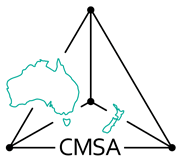Author Guidelines
The Australasian Journal of Combinatorics is a fully refereed international journal which publishes significant and original research papers and timely survey articles in all branches of combinatorics.
How to Submit
Papers should be submitted as a PDF to [email protected]. Please include a brief accompanying email with your attached paper, to ensure that your submission is not regarded as spam.
The email address [email protected] is forwarded to both Editors-in-Chief. A submission email should be resent only if no response has been received within two weeks.
Submission of a manuscript to the Australasian Journal of Combinatorics implies that the paper has not been published elsewhere, is not currently submitted for publication elsewhere, and, if accepted by this journal, will not be published elsewhere. The corresponding author must ensure that all authors listed on a submission have agreed to be listed as co-authors in the order shown on the paper.
Authors are discouraged from suggesting potential referees for their manuscripts. We try to avoid asking co-authors, close colleagues and friends of authors to be referees.
Instructions
Papers should be written in English. The writing must be clear, unambiguous, and grammatically correct. Poor expression may result in rejection without external review. Authors are reminded that referees are not expected to correct errors in presentation.
An abstract must be included in each paper. The abstract should contain a succinct statement of background followed by the principal new results. The abstract should be informative, clear and concise. Do not include equation numbers, unexpanded citations (such as [8]), or any other references to things in the paper that are not defined in the abstract. Only list in your bibliography those references which are actually cited within the text of the paper.
Papers should be prepared in LaTeX. Authors should use a minimum of user-defined macros, and should use standard LaTeX markup rather than hand-coding formatting. The LaTeX and any figure/diagram files are not required at the submission stage, but will be required upon acceptance. Authors may then wish to use the journal style file and a sample LaTeX file, which are available on request.
Editorial Processes
Upon submission, a paper will be internally assessed by some of our editors. If the paper is deemed to be of inferior quality, poor presentation or unsuitable for the journal, the submission will be rejected without full refereeing, and a rejection email will be sent to the submitting author. Otherwise the submission will be assigned to one of the Managing Editors who will then organise its external review. The assigned Managing Editor will also send an email to acknowledge receipt of the submission, usually within two weeks, and will be the contact point should any enquiry arise. If you have not heard back within two weeks of your submission, please resend your paper.
Each submission will be given a reference number of the form A123, which must be used in all email correspondence about the paper. Please ensure that we have your correct email address at all times.
Each submission not rejected in the internal assessment will normally be reviewed by two referees. We ask our referees to report within three months. However, it can occasionally take some weeks for us to find two willing referees, and then it can take several months to obtain two reports.
In most cases authors will receive reports within six to nine months, and occasionally sooner. Please wait for at least twelve months before enquiring about the status of your paper (once you have already had an initial acknowledgement of receipt).
Once all reports for a paper have been received, they will be promptly sent on to the corresponding author. Once a paper is accepted, the LaTeX and figure files will be required, and authors will be asked to give their consent for publication of their work.
Copyright Notice
Authors retain the copyright of their paper but are required to give their consent for publishing their work. We require authors to release their paper under one of the Creative Commons licenses, either CC BY or CC BY-ND.
